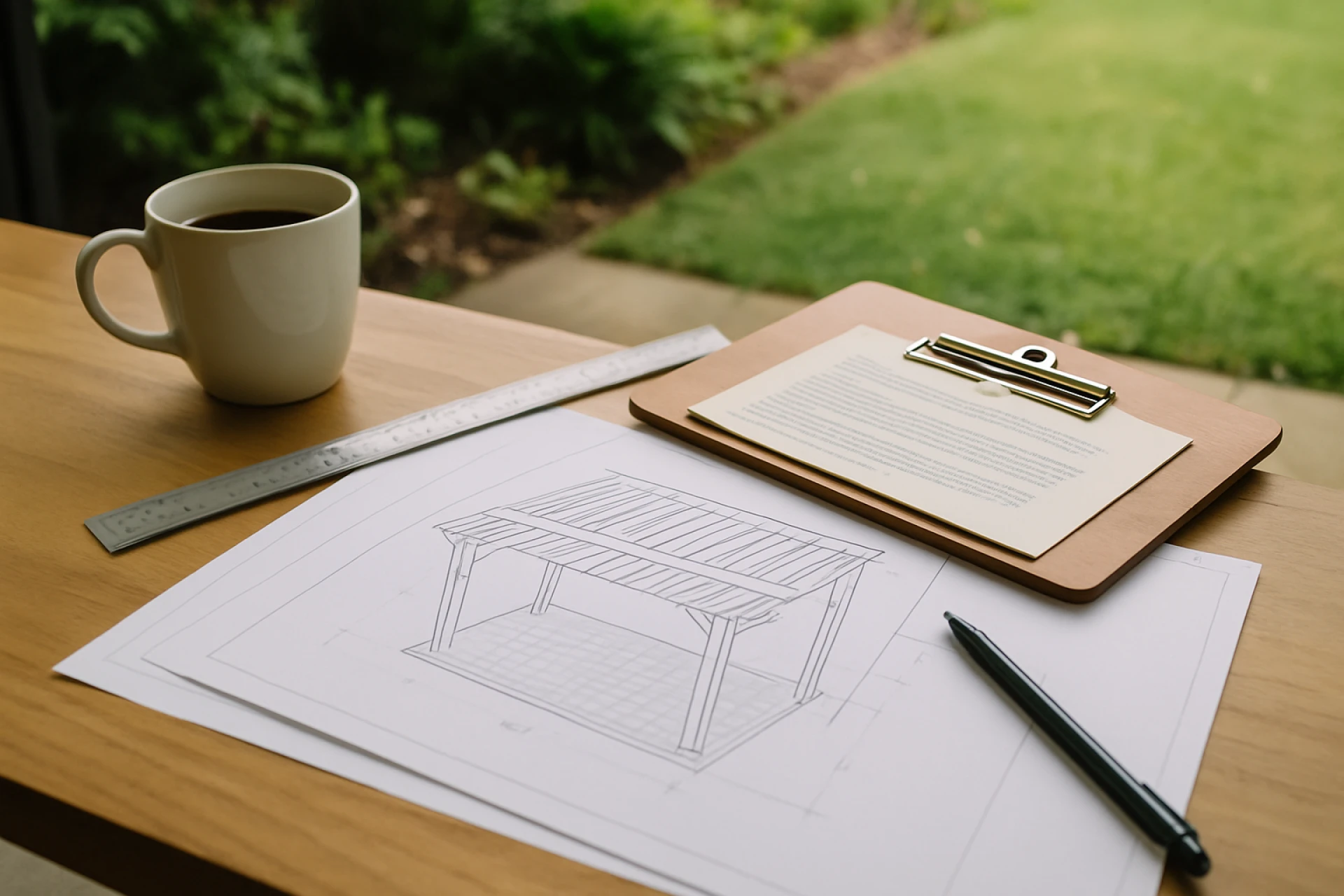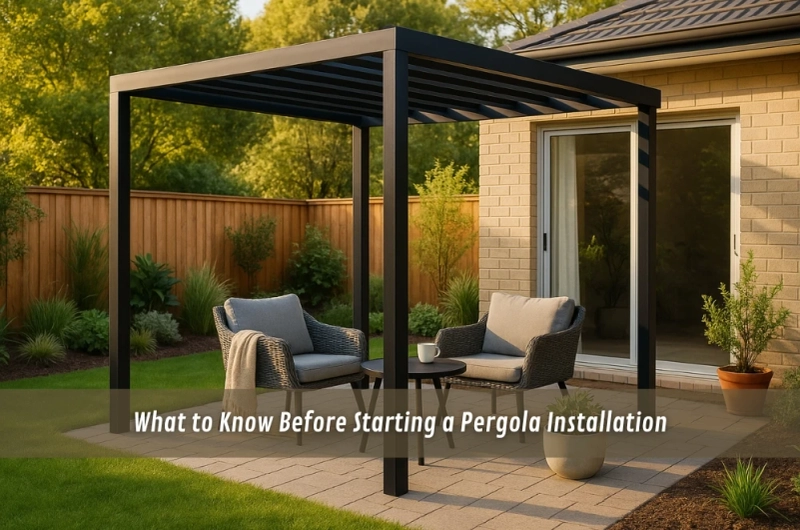Planning an outdoor upgrade often starts with a simple idea—more shade, better flow, a reason to spend time outside. But as that idea takes shape, it quickly becomes clear there’s more to consider than just appearance. Layout, weather, privacy, and even local rules all play a role.
It’s one reason pergola installations have become a common solution. They offer structure without walls, shade without fully enclosing space—something in between open air and built form. Still, getting it right means asking the right questions early. What fits the space? What purpose will it serve? This guide unpacks the key things to know before the first post goes in.
Permits, boundaries, and building codes
Before diving into construction, you’ll need to figure out where your pergola sits in relation to your local council's rules. Whether or not permits are required can depend on several factors:
- Location: Different councils have different regulations on where pergolas can be built within a property boundary
- Size and height: Larger or taller pergolas often trigger stricter compliance checks
- Attachment: Pergolas connected to a home may fall under different classifications than freestanding ones
- Materials used: Some materials may have specific code requirements, especially in bushfire-prone areas
These requirements may not always be intuitive. What looks like a simple structure could still trigger compliance issues due to setbacks, fencing proximity, or material selection. Getting clear early can save you time, and more importantly, prevent having to undo completed work.
The Australian government offers guidance through resources like their pergola outdoor living guide, which helps homeowners think through practical and sustainable design elements — especially for shaded outdoor areas that integrate with the home environment. It’s a useful checkpoint before committing to your final layout.
Matching material to your environment
Choosing the right material isn't just a matter of taste; it’s a decision with long-term implications. Will the structure be exposed to full sun, coastal air, or damp winters? Will it be a showpiece or blend into a garden?
This is where comparing a timber vs steel pergola becomes important. Timber lends a warmth and traditional look that suits many suburban backyards. It feels natural, especially when softened with climbing plants or natural stains. Steel, on the other hand, offers crisp lines, resilience, and a modern edge — perfect for minimalist outdoor designs or when you want minimal upkeep.
No material is universally best. What matters is matching your choice to your lifestyle, maintenance preferences, and how you want the space to evolve over time.

Orientation, light and seasonal shifts
The way your pergola sits in your yard — and how it responds to the seasons — can define its usefulness. A poorly oriented pergola may look good on paper but cast unwanted shade in winter, or allow in too much heat in summer.
A good starting point is to observe where the sun moves through your space during the day, and how that shifts across the year. In areas with harsh summer sun, a retractable shade element may provide better comfort. If winter warmth is a priority, you might opt for a roof material that lets in filtered light.
Beyond sun and shade, airflow matters too. Open-sided structures can catch breezes nicely, but in more exposed yards, you’ll want protection from prevailing winds or sideways rain. A well-considered orientation allows you to make the most of the seasons without needing to retrofit solutions later on.
Customisation and long-term thinking
Once the core structure is in place, there’s a whole world of personalisation waiting. Many homeowners start simple and slowly add features as they live with the space. These might include:
- Lighting for evening comfort or task zones
- Privacy screens or trellises to shape the view
- Ceiling fans or heaters for weather control
- Plant-friendly design features like climbing frames or gutters
This is where exploring pergola design ideas can help unlock new perspectives. Whether it’s built-in seating, integrated garden beds, or eco-conscious materials, inspiration can reveal possibilities you hadn’t originally considered.
It’s also a good chance to think long-term. Ask yourself: Will this pergola support future lifestyle changes? Can it be modified if you want to enclose it later or extend it as your family grows?
Anchoring the pergola to how you live
A pergola isn’t just a feature — it becomes a rhythm-setter in how you use your yard. For some, it’s the place where Saturday mornings unfold slowly with a cuppa and a book. For others, it’s the scene of family meals, spontaneous visits, or school holiday projects spread out on a table.
That means your design decisions should flow from how you actually live, not just what looks good in a magazine. Do you entertain often? Then maybe it needs lighting and space for a dining table. Want something quiet and meditative? A compact corner space with natural vines might feel more right.
This alignment between structure and lifestyle is where the best pergolas succeed — they don’t dominate the space, they become part of it.
Getting it done — with patience and foresight
While it’s tempting to rush into building, there’s real value in slowing down the early planning stages. Every decision — from location to materials to shade strategy — will echo through years of use.
If you're unsure where to begin, walking the space and mentally "testing" different configurations can be revealing. Take photos. Sketch rough outlines. Talk to neighbours who’ve already done it. And be willing to revisit your plan when new information or inspiration strikes.
When I planned my own pergola, it took nearly two months of design reconsiderations before I finally felt ready to move forward. But when it was done, it wasn’t just a structure. It was a space that felt like it had always belonged there.
Wrapping up
A pergola is more than a backyard add-on. It’s a decision that shapes how you experience your outdoor space. With the right thought and consideration, it becomes a kind of architecture that supports living — a place that adapts to seasons, occasions, and quiet afternoons alike.
Planning carefully, staying flexible, and thinking beyond the build will always pay off. Let your pergola reflect not just your design preferences, but your lifestyle, your routines, and your future.



